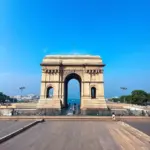Have you ever dreamt of exploring a land of breathtaking landscapes, vibrant culture, and delicious cuisine? Vietnam, with its emerald rice paddies, bustling cities, and ancient temples, beckons travelers from all corners of the globe. But planning a trip to a new country can feel overwhelming. Fear not, intrepid explorer! This comprehensive guide will equip you with all the knowledge you need to travel to Vietnam with confidence and ease.
Understanding Vietnam: A Tapestry of Beauty and History
From the soaring peaks of Sapa to the sun-kissed beaches of Phu Quoc, Vietnam is a country of diverse beauty. As author and travel writer, Sarah Chen, eloquently puts it in her book “Soul of Southeast Asia”, “Vietnam is a symphony for the senses. Every sight, sound, and smell tells a story.”
The country’s rich history is deeply intertwined with its culture. The remnants of ancient empires, the influence of French colonialism, and the resilience of the Vietnamese people have all left their mark, creating a fascinating tapestry waiting to be explored.
Planning Your Vietnamese Adventure
1. Visa Requirements: Your Gateway to Vietnam
Before you pack your bags, ensure you can enter Vietnam without a hitch. Most nationalities require a visa to enter Vietnam. You can apply for a visa online (e-visa), obtain one on arrival (visa-on-arrival), or visit your nearest Vietnamese embassy or consulate.
Pro tip: Applying for an e-visa is generally the most convenient option for eligible nationalities.
2. Best Time to Visit: Catching Vietnam at its Finest
Vietnam has a tropical climate, but the best time to visit depends on the region you plan to explore.
- March to May (Spring): Pleasant weather throughout most of the country.
- September to November (Autumn): Ideal for trekking in the north and enjoying the cool, dry weather.
For more detailed information on the best time to visit specific destinations, check out our article on What’s the best time to travel to Vietnam?
3. Getting Around: Navigating the Vietnamese Landscape
Vietnam offers a plethora of transportation options to suit every budget and preference.
- Flights: Domestic flights are a convenient way to cover long distances.
- Trains: A scenic way to travel between major cities, offering stunning views of the countryside.
- Buses: An affordable and widely available option for both short and long journeys.
- Motorbikes: For the adventurous, renting a motorbike offers the freedom to explore at your own pace.
Word of caution: Traffic in Vietnam can be chaotic, especially in major cities like Hanoi and Ho Chi Minh City. If you’re not a confident driver, it’s best to opt for taxis or ride-hailing services.
4. Accommodation: From Budget-Friendly to Luxurious Escapes
Vietnam offers a wide range of accommodation options, catering to every budget and preference.
- Hostels: Budget-friendly options, perfect for solo travelers or backpackers looking to connect with fellow adventurers.
- Guesthouses: Family-run establishments offering a more local and authentic experience.
- Hotels: From mid-range chains to luxurious boutique hotels, there’s something for everyone.
Local Insight: Consider staying in a traditional Vietnamese homestay in the Mekong Delta or Sapa for a truly immersive cultural experience.
sapa-mountain-view|Stunning Mountain View|A picturesque mountain landscape with lush green slopes and misty peaks in Sapa, Vietnam, showcasing the beauty of nature in this region
mekong-delta-homestay|Traditional Vietnamese Homestay|A traditional Vietnamese homestay in the Mekong Delta, featuring a rustic wooden house with a thatched roof, surrounded by lush green rice paddies and canals, showcasing the authentic local lifestyle
